The beginning > Some of my earliest memories growing up are of summer afternoons spent with my sister, sitting two meters apart, twisting yarns together between our toes. My maternal family lives in a big house in Pansar, a village in Uttar Pradesh, that used to be filled with craftspeople every summer. Local weavers would stay with us for two weeks to set up a handloom and weave big dhurries on the patio, using yarns my nani (grandmother) and other elderly women in our family handspun on the charkha in their spare time.
Born in Saharanpur, U.P. into a Rajput agricultural family, from Kindergarten onwards, I was sent to boarding school near Mohali, Chandigarh. These summers in between spent with family surrounded by craft enriched my childhood. I started to sew at an early age and had a knack for cutting and embroidery without any training. I was my families’ appointed fashion designer. My cousins sought advice from me – they would ask me to cut and sew their outfits for family functions.
Above: images | Rina’s family home in Pansar, Eka fabrics
I lived in Jodhpur after being married into the royal family very young. It was a richer lifestyle in every way: from the food, culture, music, history to clothing, everything was grander than the modest upbringing that I had. Women’s clothing was more ornamental for everyday wear, they colour coded different seasons and ceremonies. ‘Samdharleher’ was worn in spring: it’s a fabric with an ombre of colours like deep pink, sky blue, blush and mint; ‘Peelo’ (yellow) was worn at childbirth and other auspicious occasions; ‘Morpeech’, a stronger shade of blue-black, was worn for Diwali; ‘Lal’ (red) was most desired for all ceremonial and festival clothes; and green was mostly used as a trim in jewellery and clothes.
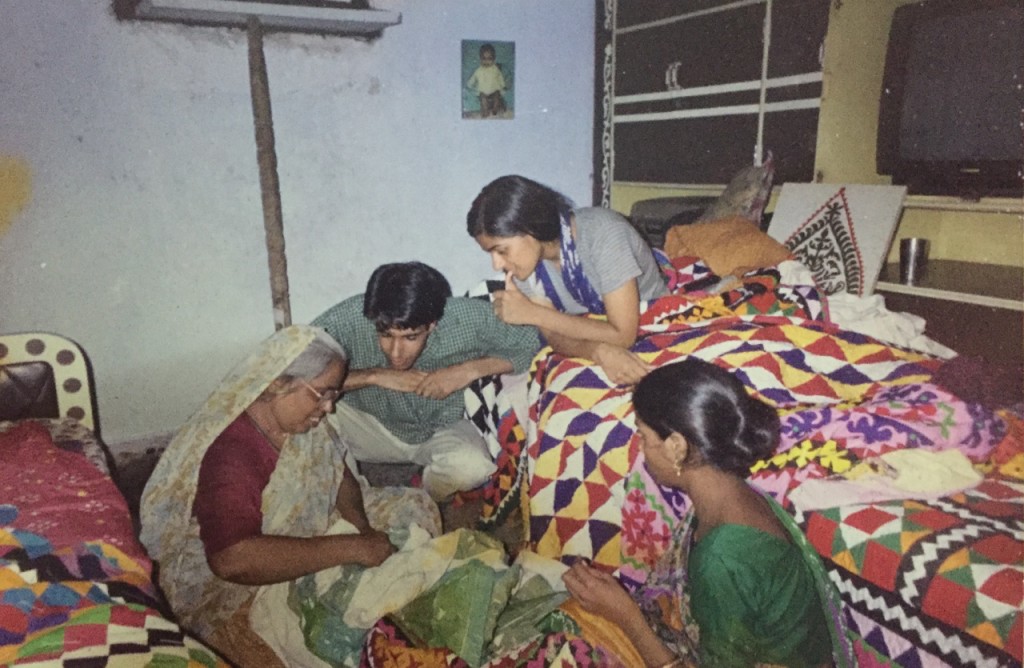
Above: image | In Ahmedebad with Kanu Behn, a craftswoman awarded for patchwork & appliqué
Turning point > Other than embracing the responsibility of my son, from my marriage, I also learnt resilience and acknowledged the fact that a life of chained aesthetics was not for me. Determined to make a life on my terms, I left my marriage in 1997 and joined Wigan & Leigh College (WLC) in New Delhi on a scholarship. In retrospect, the mentorship of Archana Shah, who initiated the crafts movement by integrating age old crafts with ready-to-wear fashion, and my internship in Bandhej in 1998 were important learning experiences for me.
I met Sandeep, then college mate, and now husband and business partner. Together, we travelled the west coast of Gujarat – Bhujodi, Dhamadka, Mandavi and Anjar – meeting master craftsmen and, along the way, documenting their work. This was my first exposure to village craft communities from west India. It led to my discovering that their work was a proper business model, compared to unorganised local crafts in the UP, Haryana and Punjab.
Above: images | Bandhej karkhana, 1998, Bhuj, Gujarat & at antique seller Wazir bhai’s house in 1998
WLC offered me the opportunity to finish my last semester and present my final collection on their U.K. campus. It was there that I learned about fashion: historical costume studies, terminology, illustrating, styling and presenting. The U.K., funnily, also brought me closer to home – my interest in textiles and crafts, Indian in particular, solidified.
Building blocks > I returned to India in 2000 and worked briefly with RMX Joss, a reputable export house in Delhi. I joined NIFT Gandhinagar in 2001, as a research and development faculty member, where we executed several projects in the handicrafts sector. Most notably, we designed costumes for eight dance tribes of Gujurat who performed at the Garvi Gujurat Festival. We traveled to Gujurat’s nooks and crannies – Saputara, Kawant, Siddhi Dhamal and Panchmahal – to source local tribal costumes as references and inspiration.
From 2005-2010, I joined ITC WILLS as a design specialist and travelled frequently to Florence, Italy, for meetings with Riccardo Rami, design consultant to Wills, to conduct seasonal research and develop ideas. I think the acumen to align my current work with Eka for the international market came from my experience working here.
I married Sandeep in 2009, and after my second son was born in 2010, I took a break to reboot and re-evaluate my career. I left ITC and joined my husband, who had started his own company and had all the resources that I could have wanted – weavers, craftsmen, block makers and dyers were all part of his work family. Until then, I had always been apprehensive about starting my own line, but Sandeep’s support motivated me. For the first time, I felt confident about a launch.
Above: image | studio washing
Jump start > In 2010, I made a small line and took it to London to show, which wasn’t a huge success. But on the last day, I was to visit the boutique Egg run by Maureen Doherty. Maureen is an icon to anyone who has followed the growth of Issey Miyake and Asha Sarabhai’s label ‘Haat’. Egg was launched by Maureen and Asha as an extension of Issey Miyake’s Haat, but they later split and now Maureen runs it. The quaint store is known for rare finds and avante-grade designers like Comme des Garçons, Sophie D’Hoore, apuntob- a.b, Casey Casey alongside the Egg label.
Above: image | salt and sugar khadi block print dress Rina wore to Egg
I ran from the tube, late and exhausted from the show, and on my way took directions from a woman in a beautiful white coat and dress, with lots of pansies in a basket. I was running to get to the store before closing time, but managed to register her dress and coat. When I got to Egg, I met Maureen. She was sipping tea, in the same white coat and dress with her flowers on the table. She looked at me and asked if I’d made the dress I was wearing and I said yes! The next day, we sat down and she selected and edited from my suitcase full of clothes. That was my first Eka order and I have never looked back.
Markets, domestic and abroad > I have since been doing four Eka shows abroad twice for each season. I have been presenting the line in New York and Paris, and began to show in India in 2014. We now stock at approximately 50-60 stores across the world, and India has grown to be a big market for us in the last few years. We started with Good Earth, Ogaan and Bombay Electric and a few others have been added organically over time. I work with a handful of stores who understand my aesthetics and who are committed to their relationships with designers. It means saying no to a lot, but that’s fine – at my age I find it difficult to please people.
Above: images | S/S 2016 collection styled by Nikhil D.
I started out internationally because I felt that India didn’t have a customer for my product, or that the label wouldn’t get its due credit in our trousseau-driven fashion business. Moreover, the West is more organised in terms of fashion retail. They invest in you so they are more focused and can make a sound business decision – which is good for them and good for me! They edit the entire range to select and buy styles and colours that work for their stores, instead of suggesting that I change my aesthetic each season.
The domestic stores’ accountability and investment in a young label like mine is questionable. Honestly, if I don’t work in the international market I don’t think I could afford to feed the domestic market, which is mostly based on a consignment model.
In India, the stores who support young labels, do it to offer a rack space of opportunity instead of believing in their philosophy or investing in their vision. A young label needs both to survive and grow with merit and conviction.
Freshness & reinvention > We work all year round with our weavers, providing them with consistent employment. We make all our fabrics ourselves primarily on handloom, but depending on the merit of the fabric also on power loom. For me, the whole point is to sustain the Eka family. I take pride in being able to consistently bring in enough work for our team of weavers, and still go back to the block makers six years later with enough orders for them to remain interested in their work and ours.
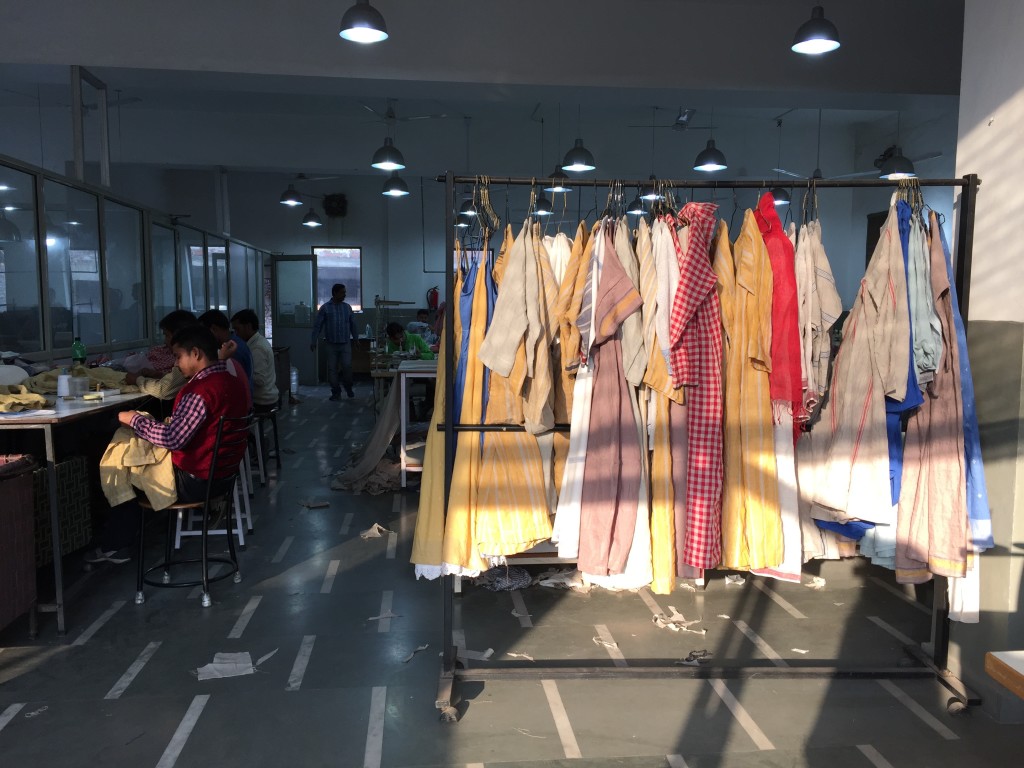
Above: image | studio production floor
My relationships with them go very deep. I travel to see them and develop new blends and weaves with linen, cotton mal, khadi, silks and wool which bring in new perspectives to silhouettes. Old swatch references, Met archives, our block printing unit in the studio, and easy access to developments in bit-looms makes the process of design seamless and more efficient.
Sometimes an odd combination of a traditional khadi sari weave, blankets from Kutch and textiles from local Indian communities, gives me ideas of colour combinations and for new textile developments of borders, selvedges and prints.
Above: block printing at the Eka studio images | Sandeep Dua
The stories emerge from travel and my local environment, because I barely socialise. I discipline myself and go deep, searching and building themes. The colour palette evolves in my head from one season to another. It happens on instinct. Product development is an often neglected part of design but I think it is the most critical. To design is one thing, but to develop it thoroughly, edit and re-edit is another. I mostly like to do away with unnecessary clutter – whatever applies to life in general applies to design as well.
The Eka woman > I think of a woman who doesn’t have boundaries of shape, size, age and culture in her mind. I can always identify such women in a crowd, with their distinct personalities, and eye for detail. Arundhati Roy could be my muse. She has bought my clothes since I started and I have filed and referenced everything she writes to me and all pictures that she sends of herself in my clothes. Also Sandy Bornman, who runs a small boutique Aman in Lamu Island, Kenya. That’s where Meera Nair found Eka. Sandy has very differentiated taste. She photographs Eka for me sometimes and her vision becomes mine. She cherishes the clothes and religiously sends me notes on what customers have said and liked about them.
Above: Pre-Fall 2015 image | Dolly
Sandy says, “The clothes have a lot of soul. Don’t give up on that.” I look up to her in so many ways – I am old school like that. I believe in anyone who believes in me and I stay committed to them. If a store has bought my merchandise earlier and is not able to pay an advance and invest again next season, I am open to supporting and re-negotiating terms. These are stores and people who have been working closely with us, long before we made a mark in the fashion industry. I like to personally interact with all my old clients, I find that mutual belief and support very comforting.
Above: image | ELLE magazine editorial styled by Nidhi Jacob
Belief system > I was told very often that in order to grow my market in India I must make kurta sets and offer them to a potential customer who doesn’t buy Eka now, but could be my potential customer in the future. Instead of changing my own brand offering, I chose to add more customers and change their perception.
My advice for growing a label’s retail distribution is to build your brand positioning through visual stimuli, build online catalogues and connect with a broader customer base. Don’t limit yourself to an immediate retail option. Instant popularity is very lucrative but also highly competitive and short lived. Choose wisely in the beginning and always listen to your instinct. Sometimes you might be wrong and miss out on an opportunity – but from my experience, most of the time you are right!
Above: Eka cotton khadi dresses in UK magazine ‘How To Spend It’ image | Damian Foxe
Reference points > Brands are contextual or referenced to history, cultures, clothing traditions, or the accessible environment. I stay away from claiming to have invented anything. The looms, weaves, blends, fabrics … everything has been done before. Developing your own aesthetic while sensitively gauging the environment is essential; there is every chance of an unintentional overlap because we all come from a similar school of thought.
Handloom and Indian techniques like ikat, jamdani, bandhani and clamp dyeing are age old. These textiles are our legacy and in today’s global, competitive environment, we can collectively survive only as a strong Indian voice through design. As an Indian design collective, we want to be heard, accepted and treated as front runners – not followers. It’s important to rise together, respecting and treating our boundaries ethically. I believe in finding your strength and working on it everyday. Making it your DNA will take seasons and years but slowly it comes to you in full force.
Above: image | studio showroom
Digital & other references > TED Talks Anca Gray Acoustics The Met Museum The Talks Border&Fall Mel – Vetements de l’ancienne 1830-1940
Many contemporary European brands are very well edited – they are small but relevant. I like Sophie D’Hoore, Gasa Inc, Casey Casey, apuntob- a.b and Daniela Gregis. Yohji Yamamoto and Comme des Garçons by Rei Kawakubo are inspirational.
Perspective > I am a mom to a six-year-old and there is little life you can claim as your own after having children. That’s the bittersweet truth but it’s the only way I would have it.
I like to read, walk, and attend to the everyday. It’s an outlet when vegetables or my son’s lunch tiffin suddenly move up on the priority list. Stress is dissolved momentarily and I learn my lesson – to not take anything too seriously. I work and sleep odd hours. I walk before I sleep, just to be lighter in mind. I meditate every once in a while. I revisit my past to realign and also to remind myself that this knack for creativity got me out of the most difficult times in my life. Creativity is the best gift you can give to yourself and your children. Nurture your own and theirs.
Work history >
Eka: Founder and Designer, Gurgaon. 2010 – present
WILLS ITC: Design Head – Womenswear, New Delhi. 2005 – 2010
NIFT: Asst. Professor, Fashion Design Department, Gandhinagar. 2001 – 2005
Note: Eka is / was a client of the Border&Fall Agency.

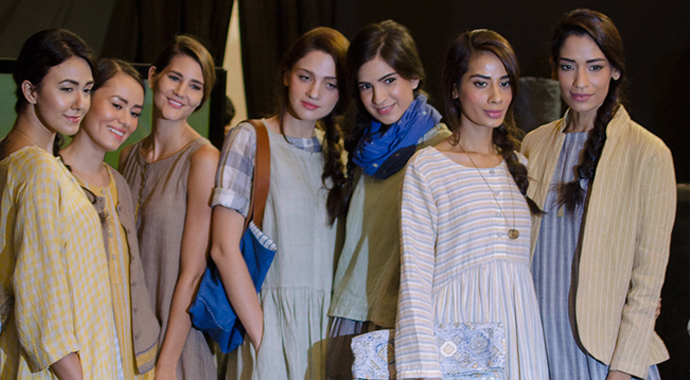

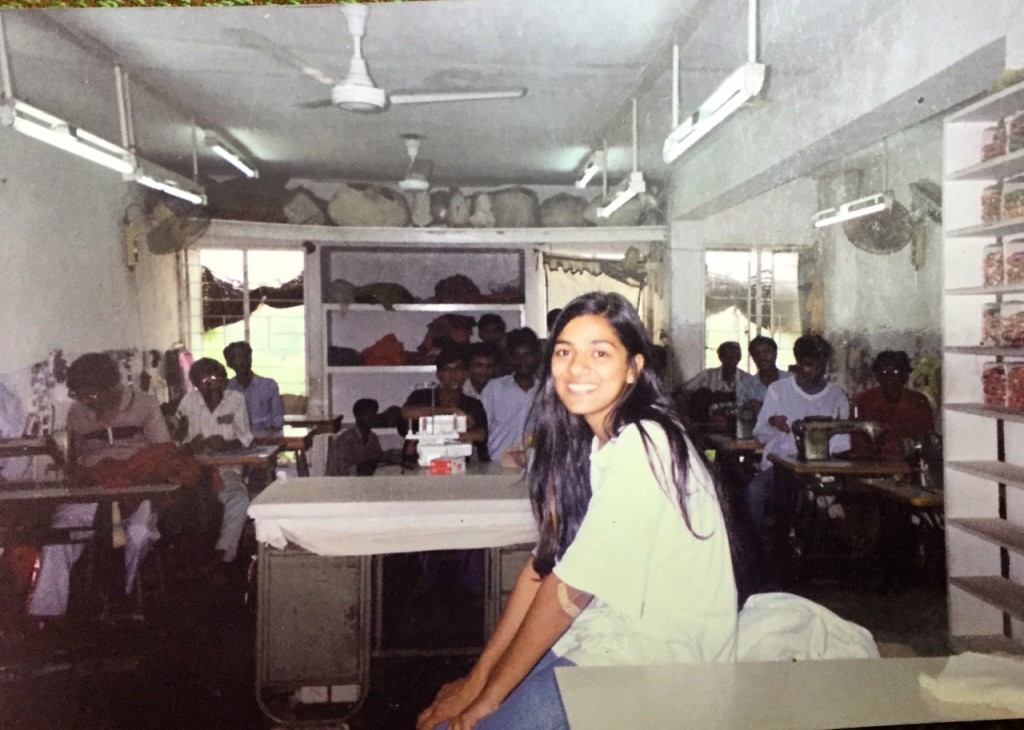
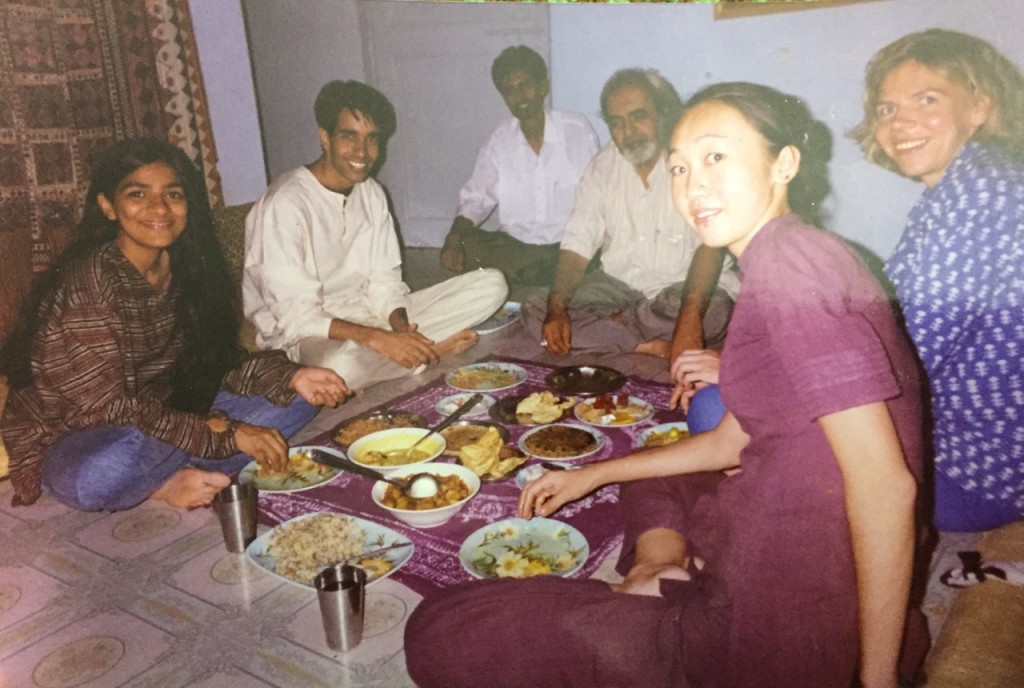

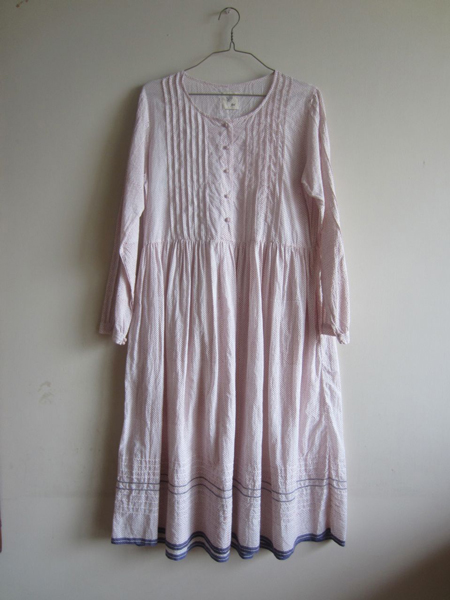
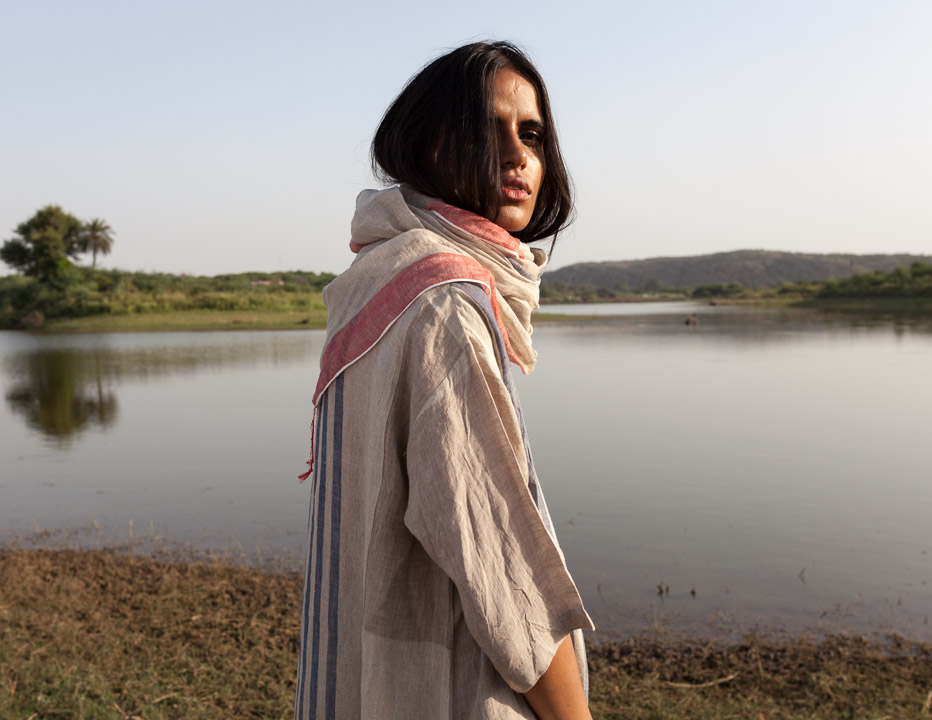
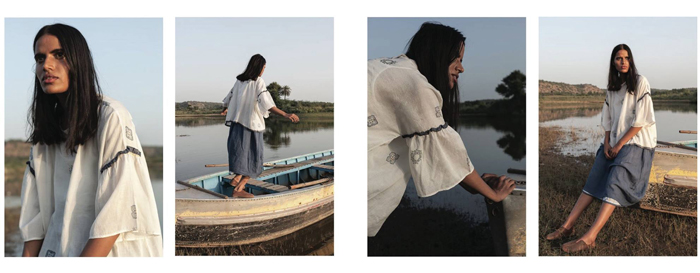
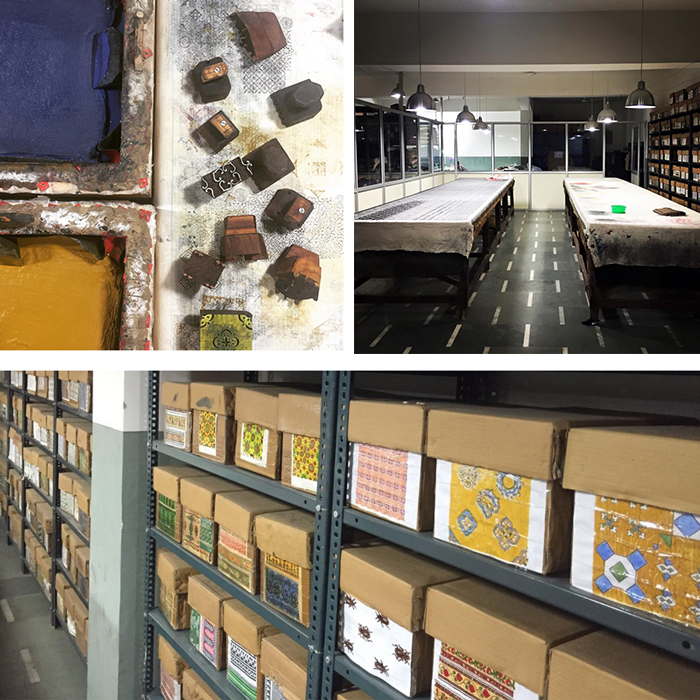
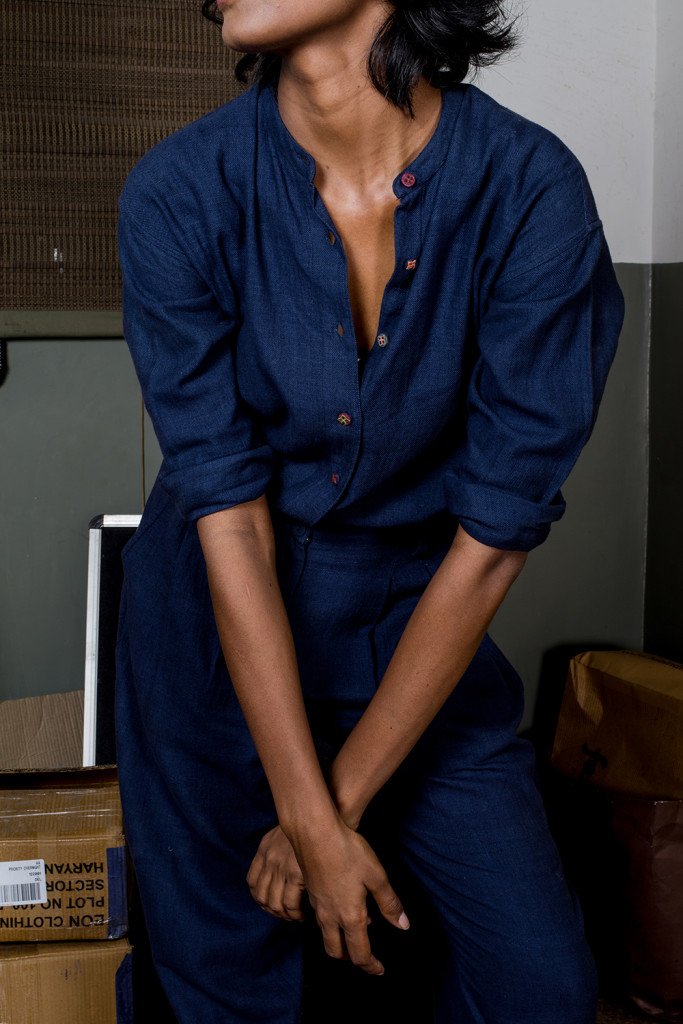
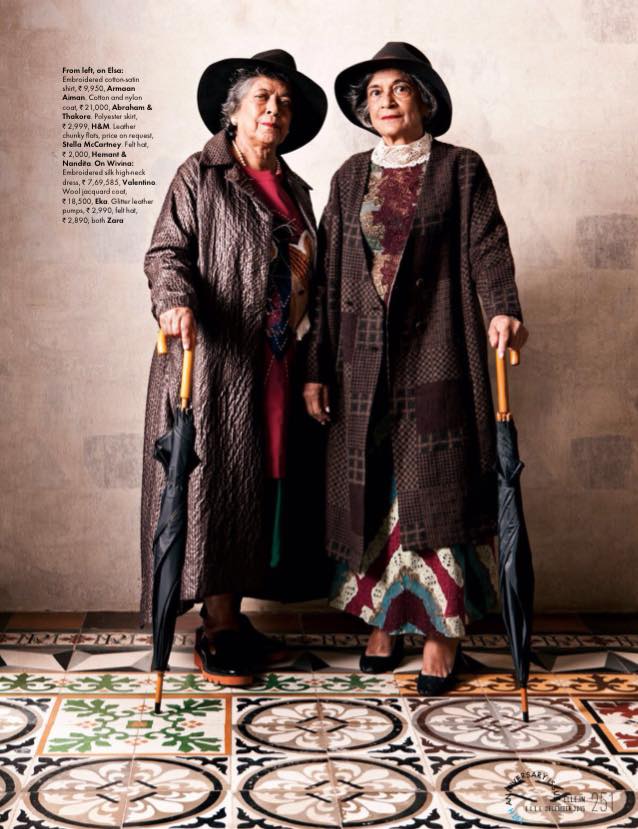
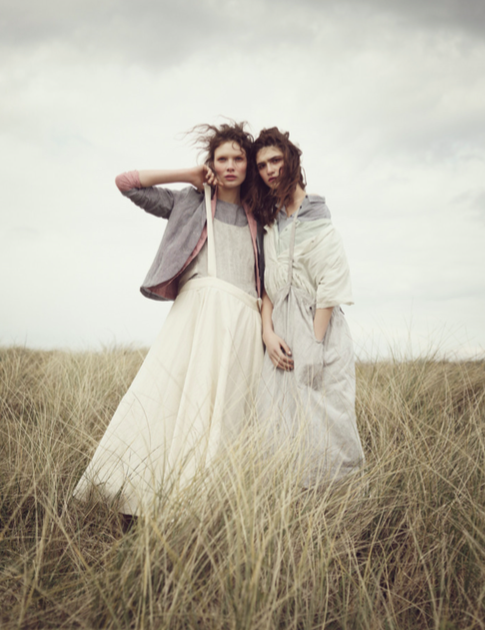
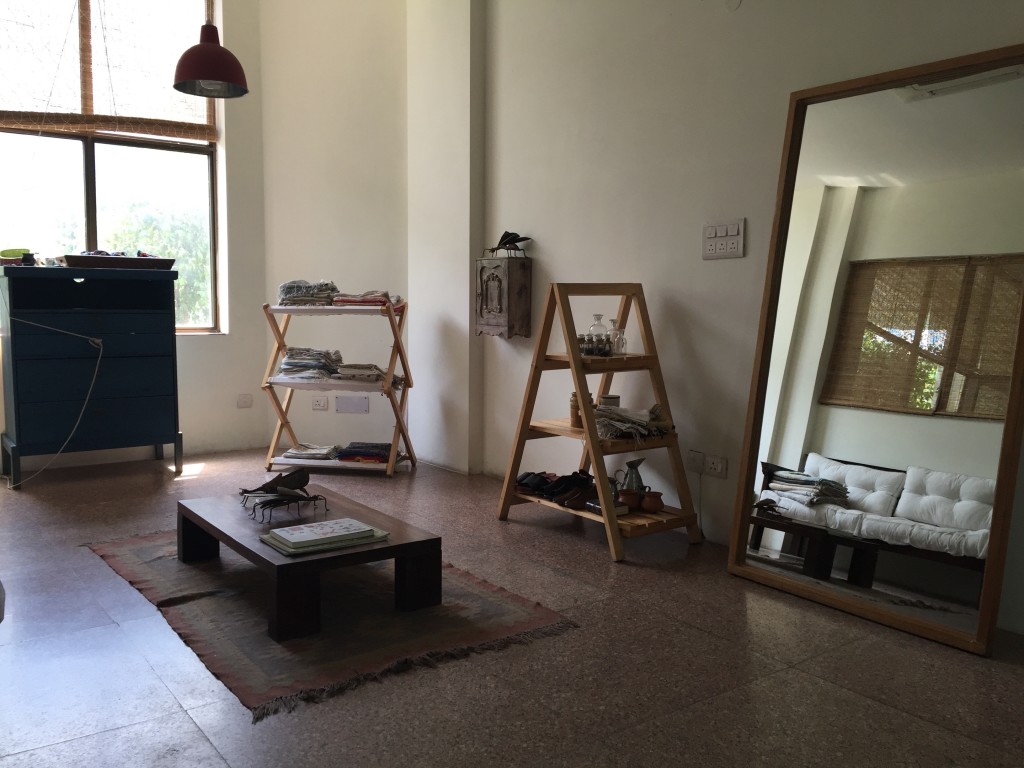
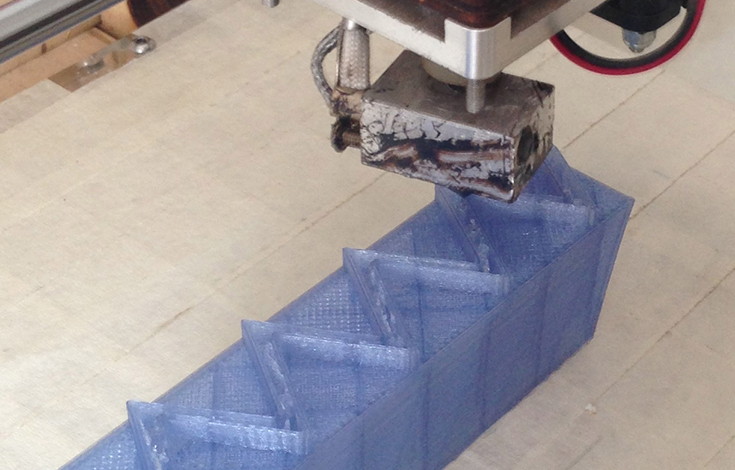
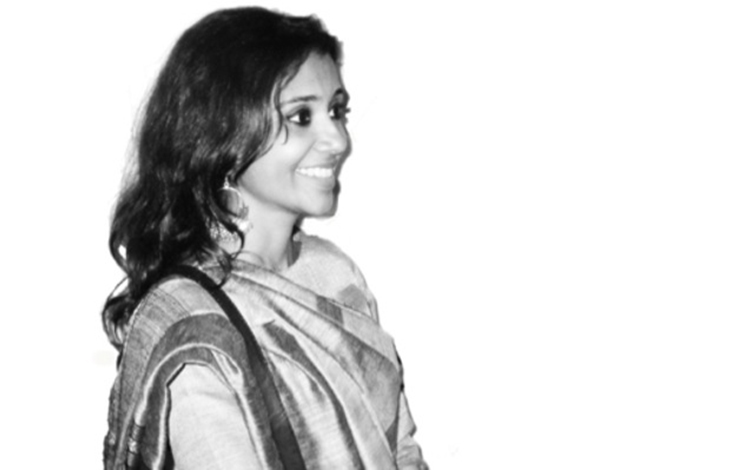
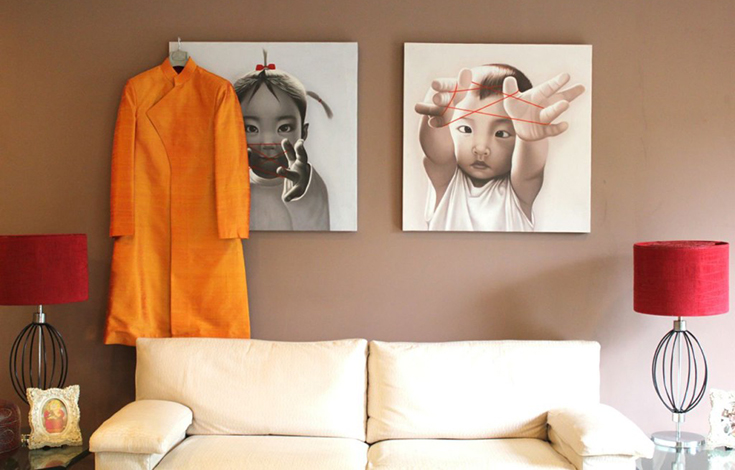
I value people who have a soul…and are indivualistic…at the same time…eka is this!…more power and success to you Rina!…
i knew i was coomunicating with an exceptional human being when i first approached you Rina. It was love at first sight when i saw your work. Wishing you more success.stay the same always 🙂
I never stopped thinking about Éka after I first saw it a few years ago. It is beauty and history and soul and i am so pleased that we were able to re-connect. When i showed it to one of my associates she commented that it looked like it was made by angels in heaven and i have to agree although it’s clear you certainly keep your feet on the ground.